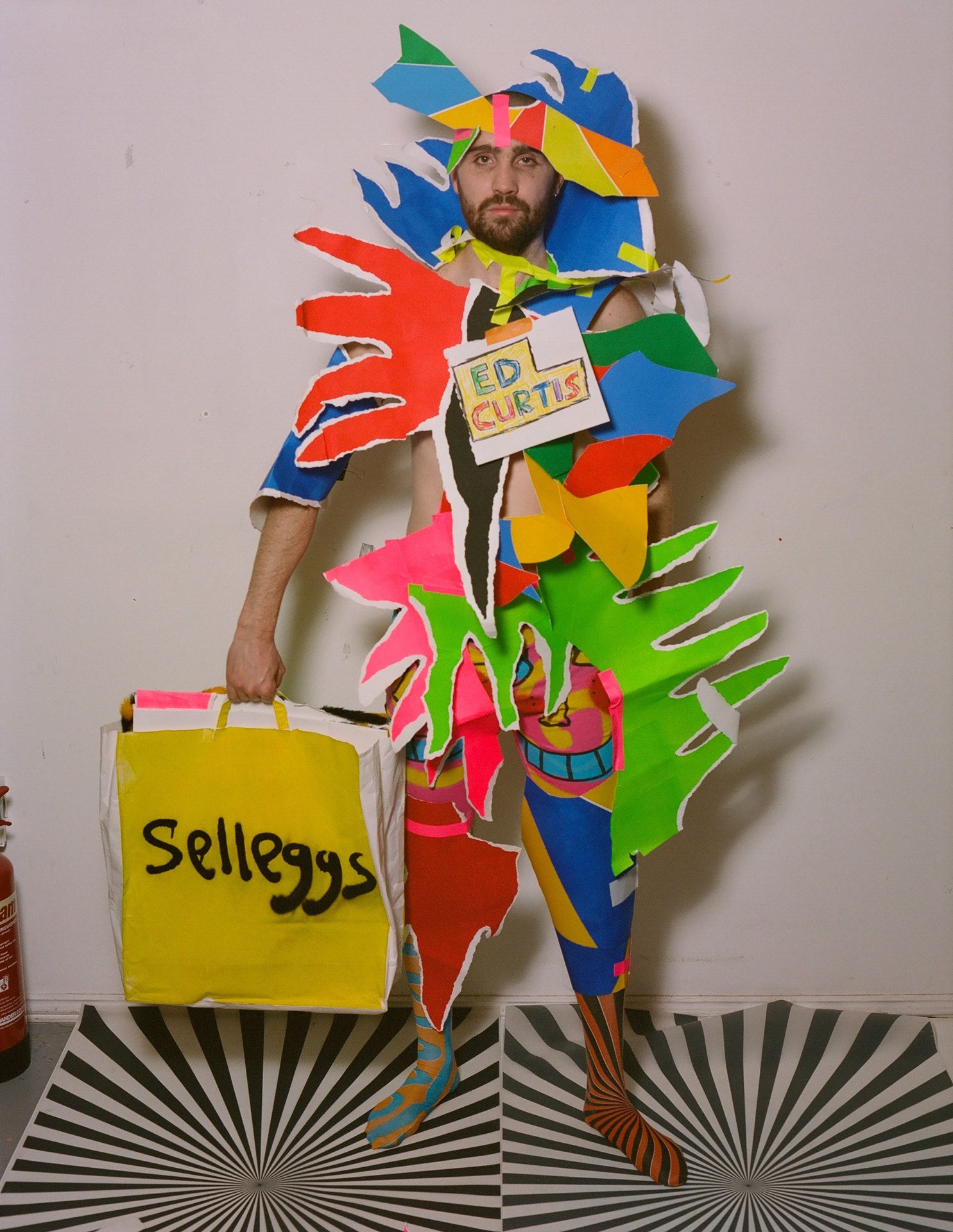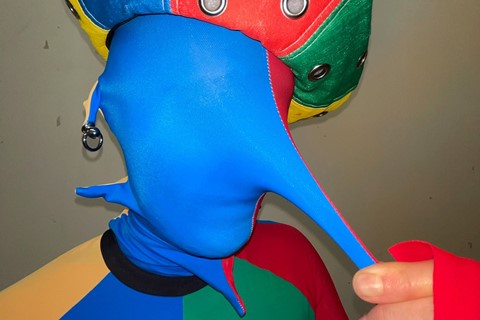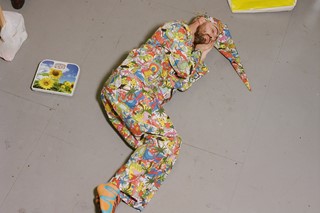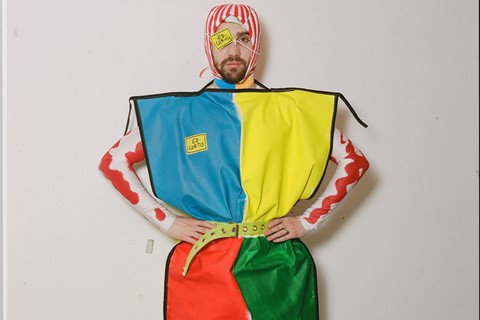- Who is it? Ed Curtis is a London-based designer and artist
- Why do I want it? Handmade, one-of-a-kind pieces that walk the line between fashion and painting
- Where can I find it? Online at ed-curtis.com
Who is it? Ed Curtis speaks to me on a particularly snowy day from the warmth of his car, parked near to his studio in Peckham. The designer and artist, who was born and raised in a village in Herefordshire, has been living and working in South London for several years now, after moving to the city in 2010 to study womenswear at the London College of Fashion. “What did I do when I got to London? Mostly just work my ass off – and this has kind of been my way of doing things ever since then,” he laughs. During his time at LCF, Curtis spent three months in New York interning at Marc Jacobs, which resulted in the designer being introduced to the designer Katie Hillier and taking on a role at the newly launched brand Hillier Bartley. “Although, between graduating and Hillier Bartley I did a lot of other stuff,” he notes. “I worked in catering; sold hot dogs at Wembley Stadium on match days; I was a toilet attendant ... I did all that stuff. It took all that experience to realise that I have to be creative and make things. It makes me feel shit if I’m not!”
Curtis spent five years at Hillier Bartley, and it was during this time that he began to find his feet again with his own designs. “I only had weekends to work on my projects, so whatever it was I was making had to be quick and relatively affordable – which is why I started painting,” he explains. “It took me around three years painting and printmaking before I started making clothes again.” Curtis adds that he still chooses to treat his work as an art practice to this day, resulting in a multidisciplinary approach to what he does. “I did a few installations at Dover Street Market, for example, I’ve worked with sculpture … I also never plan what I’m going to create – it’s so intuitive and can be quite a long process.”

Why do I want it? Curtis does not create seasonal work, or adhere to the strict fashion calendar. Everything he makes is hand-produced and hand-painted by him, in one-of-a-kind or limited runs – and he also takes individual commissions. “I’m not really creating collections,” he says. “I see it as one endless project that could potentially last forever.” Despite the bespoke nature of Curtis’ pieces – which include accessories such as a ‘bean bags’, brightly coloured pouches in the shape of kidney beans, canvas totes and wallets printed with psychedelic patterns, and skin-tight tops with all-over squiggles and swirls – the price points are also kept fairly low. “I want what I make to be fairly accessible compared to a lot of brands,” notes the designer. “I think you can make really interesting clothes and for it to still be, relatively, affordable.”
“Every element of my work has to come from me physically – I have to have birthed it using my own hands,” he continues. ”I think people appreciate that manual approach when so much else is digital.” Naturally, Curtis takes inspiration from figureheads such as the late Judy Blame, whose entire practice straddled art and fashion and eschewed mass-production, championing creativity over commerciality. “If you were to think about his work you would have never felt like he was motivated by following the fashion machine – he had his voice and he did his thing for his whole career. And I love that.”
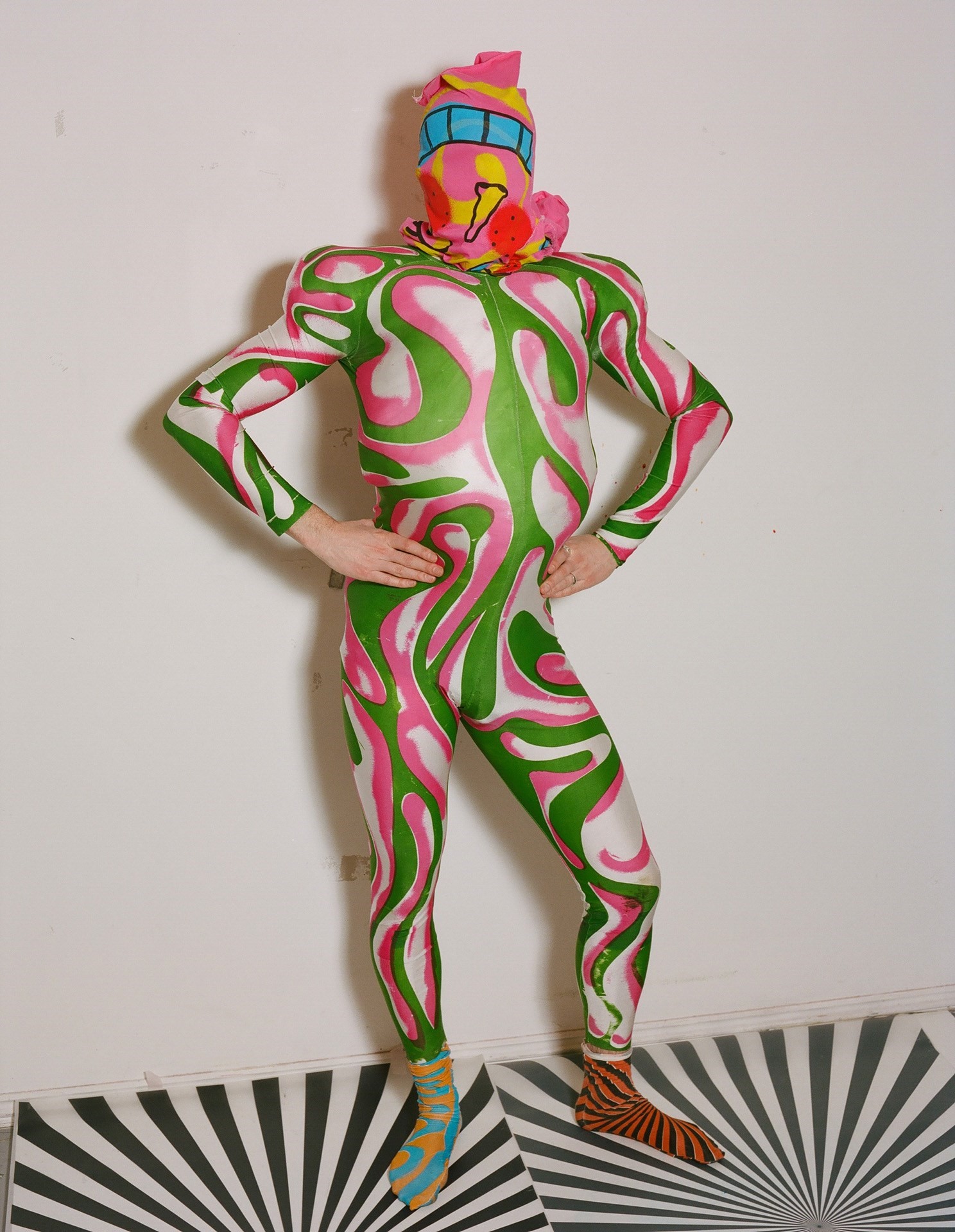

Curtis also has full creative direction over the styling and documentation of his work, right down to modelling in his own shoots. His latest project, first presented as part of this feature, is a collaboration with the stylist Clifford Jago. “They got in touch with me as they wanted to borrow my stuff for a shoot they were doing for a music artist,” he says. “We got talking, and we realised that we had the same creative energy and we spent ages talking about, like, Bananas in Pyjamas – so we decided to come together in a ‘style off’.” Here, Curtis poses in his studio in his Club Kid-esque designs, from full bodysuits in primary hues to garments made of paper artworks from his archive. Whether he’s clutching a Russell Hobbs iron or crouching ominously on top of a shelving unit, the shoot aims to “document the unglamourous side of making things”.
As for the future, the designer notes that he intends to collaborate with Clifford Jago again, and to continue balancing his own practice with the work he does for brands on a consultant basis – recently Curtis has worked with the likes of LuluLemon, J&M Davidson, and Calvin Klein Jeans. “Of course, this year has been really hard,” he says. “But my work is usually a reflection of the situation I find myself in – the bleaker the situation the more I want to escape from it and propose a more colourful alternative.
Where can I find it?
Online at ed-curtis.com.
